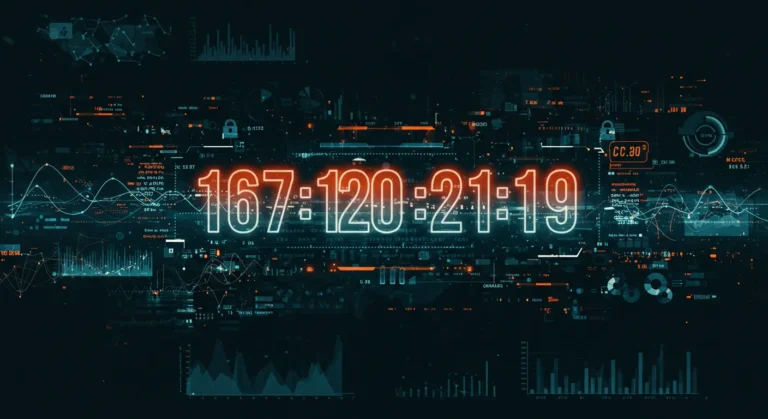Introduction
The term 167:120:21:19 might seem like a random sequence of numbers, but it holds specific meaning across various contexts. This sequence can have diverse applications, whether used in technical data, sports analytics, or industrial specifications. This guide will break down the possible meanings, uses, and significance of 167:120:21:19, making it beginner-friendly for a UK audience.
What Does 167:120:21:19 Represent?
At its core, 167:120:21:19 could be interpreted differently, depending on the field of study or industry it applies to. Some common possibilities include:
- Scientific and Technical Data – Used in physics, chemistry, or engineering for measurement ratios or calibration values.
- Sports Statistics – A possible representation of team performance metrics in a game season.
- Timekeeping & Scheduling – This could be related to time-based sequences or duration calculations.
- Networking & IT Configurations – This may be a reference code in IP addresses, server configurations, or security protocols.
- Mathematical Sequences – This may relate to specific geometric or arithmetic patterns used in problem-solving.
Possible Applications of 167:120:21:19
- Data Analysis in Research – This sequence might be used in data modeling and analytics.
- Industrial Usage – These numbers could indicate production units or machinery settings in manufacturing.
- Statistical Reports – The numbers might represent demographic data or economic trends.
- Coding & Programming – Developers could use 167:120:21:19 as a parameter or function value.
- Astronomical Measurements – Scientists might use this to classify celestial objects.
Importance of Understanding Number Sequences
Numbers like 167:120:21:19 are crucial in various disciplines as they help simplify complex concepts, enhance data accuracy, and improve efficiency in calculations. Recognizing their significance can aid professionals in fields such as IT, engineering, business analytics, and science.
How to Use 167:120:21:19 in Practical Scenarios
- In Business Analytics – Can be used for customer segmentation and predictive modeling.
- In Education – Teachers and researchers may use the sequence in statistical problems or classroom experiments.
- In Sports Strategy – Coaches might analyze performance metrics in this format.
- In Coding – Could be used in database indexing or error logs.
- In Cybersecurity – Can be applied in security protocols, firewall configurations, or password encryption.
- In Artificial Intelligence – Machine learning models often use numerical patterns like 167:120:21:19 for data clustering and training sets.
Conclusion
The 167:120:21:19 sequence might have different interpretations depending on its application. Whether it is used in science, sports, business, or programming, understanding its meaning can enhance efficiency in data processing and problem-solving. Keeping an eye on such number sequences can help professionals stay ahead in their respective industries. This sequence could be a key factor in predictive analysis, cybersecurity, and AI-driven decision-making.
Read More : Should I Use Hosfusiymorp 35.3 Software? A Detailed Review of Features, Pricing, and Alternatives
Frequently Asked Questions (FAQs)
Q1: Is 167:120:21:19 a mathematical formula?
A: It could be, depending on its application. Some number sequences hold unique properties in algebra and statistics.
Q2: How can I determine the meaning of 167:120:21:19 in a given field?
A: You need to check the context in which the sequence is used. It might be a code, a ratio, or a unique identifier.
Q3: Can this sequence be used in software development?
A: It may be a configuration parameter or reference value in specific coding environments.
Q4: Where can I find more information about numerical sequences like this?
A: Websites like research journals, educational platforms, and technical documentation databases provide more insights.
Understanding 167:120:21:19 requires considering the specific field or industry it applies to, making it a valuable sequence in data science, business intelligence, and technological advancements.

